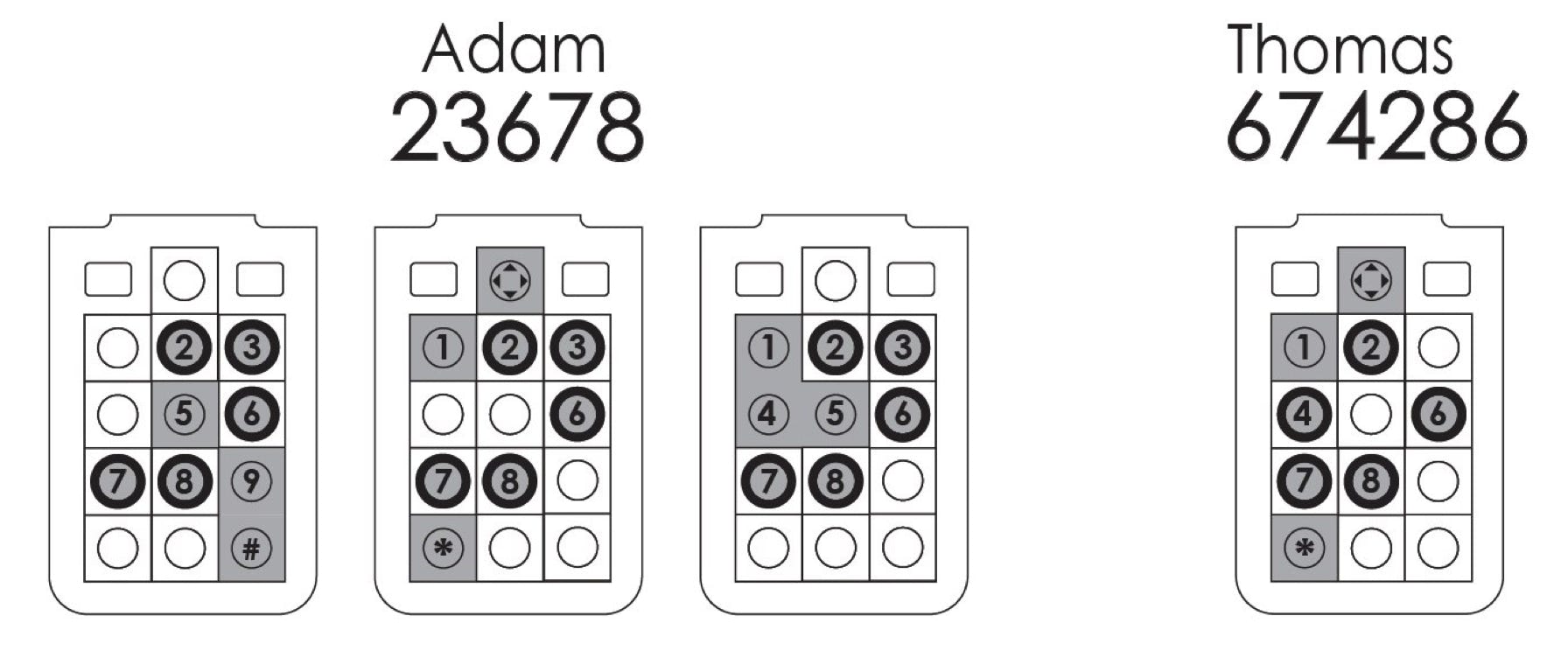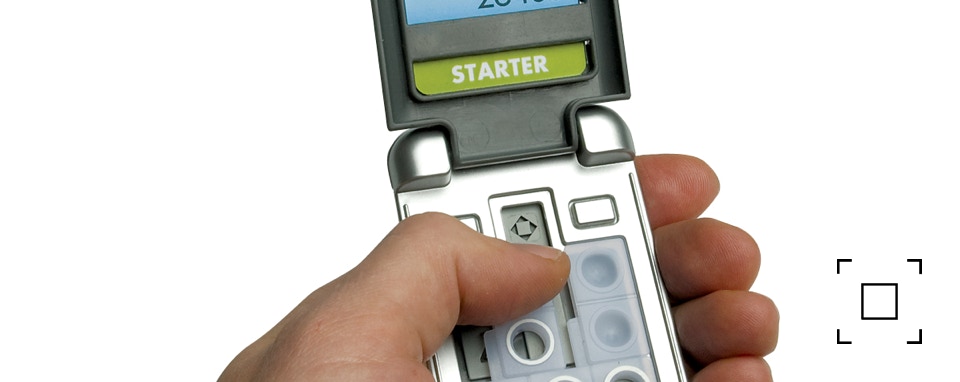SmartPhone
The story behind the creation of SmartPhone
Raf Peeters, January 2010
This sliding puzzle started out as a half-baked suggestion from one of my bosses. He asked if we could create something for Smart Games with a mobile phone because it was “a popular theme”. I said, ‘mmmm,’ but inside my head a voice was shouting, ‘No way,’ because a popular theme doesn't necessarily make an interesting game.
But when I was bicycling home, I’d already come up with a concept for it, although I hadn’t really wanted one. And the first prototype I made worked. So maybe the idea was not so stupid after all. The result was a sliding puzzle, but one where you don't know where your puzzle tiles will end up until you have solved it. This makes this game different from other sliding puzzles like fifteen puzzle.
OBJECT OF THE GAME
The object is to move the puzzle pieces so that the correct numbers from your challenge stay visible in the circular cutouts. In most cases only one position of the tiles will give this result. So you need to think logically to figure out what this position could be. And than you still have to slide the tiles around in order to get there. Since numbers are already used on the game board, I didn't number the challenges but gave them different names. This way the form, theme and function fit perfectly together. Each challenge is now one of your friends that you want to call. When solving it even looks like you are trying to send an SMS.
SLIDING PUZZLE
One of the tricky things to watch out for in this puzzle is that although 2 buttons might look the same (they both have a hole at the bottom edge of the tile), they are not. Like all sliding puzzles, you can't interchange the location of two tiles without changing something else. So in the final solution, each of the two tiles will have a specific end position. If you try to solve it the other way around, you could end up searching forever.
The more difficult the challenges get, the more difficult it becomes to define where the tiles will be in the solution. The challenges look more and more complicated (with numbers in a random order and some number shown twice), so it becomes harder to memorize which combination of numbers you must solve. For some people testing the game, this was no problem, but for others it was. It doesn’t make a difference for the solution if a number in the challenge is shown twice, you only need to show it once in the solution.
SOLUTIONS OF SMARTPHONE
The more difficult challenges also require more moves to complete them, when you play the challenges in the right order (that is, alphabetically). The solution of one challenge is the starting point for the next challenge. There are 32 different challenges. As you can probably imagine, it was not really possible to include any more challenges. Once you have found the right trick to solve a challenge, the game suddenly seems a lot less difficult. All this is why this game has only 3 levels and no MASTER level.
Challenges of the STARTER level have 3 or 4 solutions, the other challenges have only one. The box says ‘SmartPhone, sliding puzzle fun’, because my boss was afraid that people would think they’d bought a real smartphone and not a puzzle – although I doubt it that you could find one for 10 €.

examples of solutions for challenge “Adam” and challenge “Thomas”

Website ©2010 Raf Peeters
Products and images: © Smart
